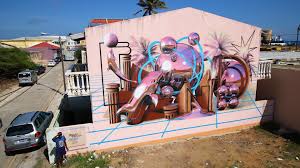
Augmented Reality (AR) is revolutionizing how we experience visual art by merging the physical and digital worlds. Artists are increasingly using AR not just as a tool but as a medium, layering virtual elements over real-world environments to create interactive, immersive works.
These experiences often begin with a smartphone or AR glasses. A blank wall becomes a moving mural, or a printed image reveals animated storytelling through a digital overlay. This dynamic interplay invites viewers to become active participants in the artwork, blurring the boundary between observer and creator.
AR is especially popular in public art. Murals, statues, and even sidewalks are now activated by mobile devices, offering narratives that evolve in real-time. This creates opportunities for art to be more inclusive, accessible, and responsive to place and community.
For many creators, AR is a way to explore themes of memory, history, or alternate futures. It allows them to embed layers of meaning without altering physical spaces. From reimagining colonial monuments to visualizing environmental data, AR empowers artists to question and reshape reality.
As technology becomes more affordable and user-friendly, AR art is no longer confined to high-budget exhibitions. Independent artists are creating AR zines, filters, and digital sculptures viewable from home. This expands the reach of art beyond traditional institutions.
AR isn’t just an add-on—it’s a transformative medium. It opens a new frontier where imagination spills into our everyday surroundings, making art not just something we look at, but something we live within.
